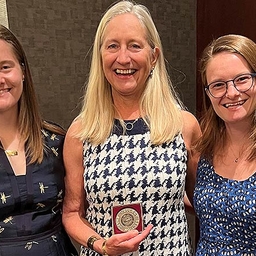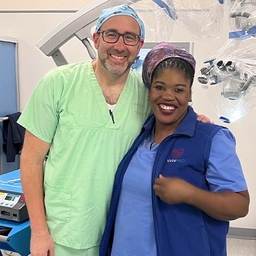
Improving Hypospadias Care Delivery through a CORES Research Grant
Mar 4, 2025
Christopher J. Long, MD, and his team utilized a Center for Outcomes Research in Surgery (CORES) grant to make considerable improvements to hypospadias care at CHOP.
At CHOP, your child's care is in the hands of one of the largest and most accomplished teams of pediatric urology experts in the world.

Mar 4, 2025
Christopher J. Long, MD, and his team utilized a Center for Outcomes Research in Surgery (CORES) grant to make considerable improvements to hypospadias care at CHOP.
Mar 4, 2025
This clinical case study describes a patient with early onset cystinuria, a rare genetic cause of kidney stones, that was first managed by multiple unsuccessful procedures and surgeries before referral to Children’s Hospital of Philadelphia.
Oct 16, 2024
Researchers from Children’s Hospital of Philadelphia (CHOP) and Vanderbilt University Medical Center were awarded a $7.37 million RC2 grant from the National Institutes of Health (NIH) to lead a five-year multisite project across the U.S. focused on kidney stone disease research.
Feb 27, 2024
Experts in the STRIVE Program work collaboratively to delivery comprehensive care to children with differences in sexual development/intersex and other conditions.
Jan 24, 2024
Dr. Van Batavia was recently interviewed by CHOP’s Research Institute about his research specialty.

Nov 2, 2023
Earlier this fall, two CHOP urologists received awards for their outstanding achievements in pediatric urology. The awards were presented at the annual Societies for Pediatric Urology Fall Congress meeting, with hundreds of researchers, clinicians, and investigators from around the world in attendance.

Oct 9, 2023
CHOP's Center for Outcomes in REsearch in Surgery (CORES) is making strides to improve outcomes for children with surgical conditions. The Center, led by attending urologist Gregory E. Tasian, MD, MSCE, breaks down clinical and research silos and groups researchers with patient families to improve our ability to apply outcomes back into care.

Oct 6, 2023
Karl F. Godlewski, MD, recently joined our attending team following his completion of a two-year fellowship with our Division. Dr. Godlewski has special interest in hypospadias and bladder exstrophy, and he has extensive experience in all areas of pediatric urology, including robotics — both typical and complex.

Oct 6, 2023
CHOP Attending Pediatric Urologist Christopher Long, MD, joined three international faculty to lead a live surgical course on hypospadias in Johannesburg, South Africa.
Oct 6, 2023
Ten years ago, we became one of the first institutions to standardize clinical documentation and collect granular data on penile biometrics, operative surgical details, and postoperative outcomes for all patients, which has allowed us to evaluate our outcomes and advance treatment strategies. We are now reaping the rewards.